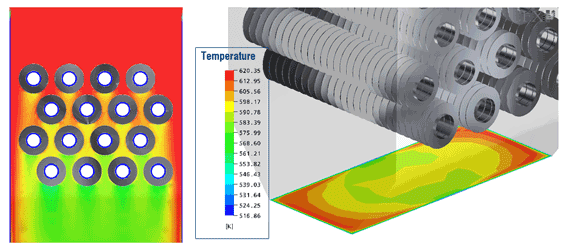Heat Transfer - CFD Thermal Simulation
The analysis of heat transfer plays a role in almost any Computational Fluid Dynamics (CFD) project. We have discussed the role of heat transfer modeling in combustion and multiphase flows, now we look at other applications of heat transfer simulation. In CFD, heat transfer is governed by three main phenomena: conduction, convection and radiation.
Industries that rely on Heat Transfer Processes
Heat transfer related processes are present in the equipment used and produced by all the major industrial sectors. A few real life applications where heat transfer plays an important role are:
- Automotive industry (radiator, cooling circuits, lamps)
- Aerospace (de-icing system, cooling systems)
- Chemical Process Industry (heat recovery systems, heat exchangers)
- Energy (kilns, boiler, cross flow heat exchangers, solar panels)
- Home appliance (ovens, household heaters)
It is evident how heat transfer is a branch of engineering with a long history, and the ever more demanding energy efficiency requirements of today are driving engineers to continuously improve the efficiency of heat transfer processes. A large quantity of equipment that relies on heat transfer phenomena has been developed over the years, resulting in a technology push that is constantly requiring more detailed numerical analyses. Such analyses often require the use of optimization techniques or advanced turbulence modelling of components such as the fins of a heat exchanger or turbulators in tubes and plates.
Heat Transfer from the Numerical Simulation Perspective
The simulation of heat transfer requires a good predictive turbulence modelling software application particularly near the walls. Unfortunately the preset wall functions in most standard commodity software products are often times inadequate and can act as numerical shields.
The main heat transfer phenomenon in applications such as the fins of a heat exchanger, or turbulators inside tubes or on plates, is the convective physical transport phenomenon. CFD calculations using a fine meshing capable of boundary layer resolution, produce results that provide engineers with a deep insight into the phenomena. Thanks to this insight engineers are able to improve the overall designs and optimize the overall heat transfer, depending on the specific goals/needs.
For heat conduction problems, conjugate heat transfer is necessary in order to solve the Fourier equation through solids (whose material properties can usually be set as nonlinear and anisotropic in most commercial codes); if wall to fluid boundaries are trivial, a closed-form solution can be easily found, otherwise a Finite Element code is necessary to resolve the temperature and the heat transfer rate.
For heat transfer problems where the temperature difference is relatively high, radiation is an important phenomenon to be considered, requiring surface to surface modeling with gas absorption for grey gases. Also, the software package used for modeling must have a reliable database containing the spectral properties of materials in order to be able to effectively model their greenhouse gas emissions.
Typical physical aspects to cover in a predictive turbulence model where the heat transfer is governed by the radiation physical transport phenomenon are:
- laminar and turbulent boundary layer
- multiple material properties and non linear material properties
- radiation with grey gas and spectral material properties
- buoyancy
- evaporation, condensation, change of phase in general
Why is the Mathematical modeling of Heat Transfer so important?
Heat transfer CFD predictions are often used to verify the flow balance in 3d geometries. An example of when a predictive turbulence model is extremely helpful is the case of an automotive radiator. Here a designer may wrongly assume a uniform heat flow, while the complex geometry and boundary conditions often cause that flow to be uneven, resulting in inaccurate heat transfer coefficients and loss of efficiency. The insight provided by a higher fidelity numerical model is therefore an invaluable asset for the design engineers.
Critical regime flow or scenarios can also be studied: for example, it is possible to simulate the boiling of the liquid inside a heat exchanger due to excessive heat wall release, which in turns is going to impact the overall heat transfer coefficient for the exchanger.
Thermal shock resistance is another very important material quality that can be effectively simulated, especially for brittle materials immersed in a fluid. As stress and strains can cause cracking in these materials when subject to high temperature gradients, it is important to correctly simulate the heat transfer from/to the immersed fluid, which is usually moving at high velocity. Furnace or burner failures are some classical examples of this phenomenon, and are often seen in aerospace and defense applications.
The following are some examples of how a thorough CFD analysis of the heat transfer phenomena helped improve the design of products:
- radiators and heat exchanger flow balance
- cross flow heat exchanger liquid gas
- pins and turbolators pressure drop and trade-offs
- kilns transient analysis
- thermal shocks, Solar panels
- cooling jackets, cooling holes position and dimensions
- automotive exhaust, turbogas exhaust....
- defrosting ducts for automotive and home appliances
- lamps, automotive headlights
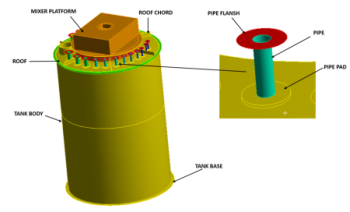
Durability and Buckling Analysis of Storage Tanks
FEA analysis of the Durability, Structural Integrity and Buckling behavior of a new group of toxic liquid and fuel storage tanks/
- ANSYS Mechanica
- Case Study
- Oil and Gas
- FEA

Using CAE to Optimize the Structure of Power Harrows in Farm Equipment
The simulation represented the impact of the harrow tooth against a stone during the working phase. Using CAE to optimize the structure of power harrows. The test was carried out in different conditions
- Recurdyn
- Case Study
- Heavy Industry
- Multibody Dynamics
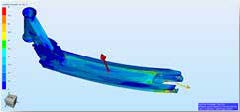
Strains and Load reconstruction of Razor™ two-wheeled Scooters
The article provides a complete evaluation of a 2-wheeled Razor™ Scooter with analysis models & experimental strain measurement. It shows the application of the software True- Load to calculate operating loads from a variety of dynamic loading events.
- Automotive
- Finite Element (FEA)
- True-Load
- Whitepaper
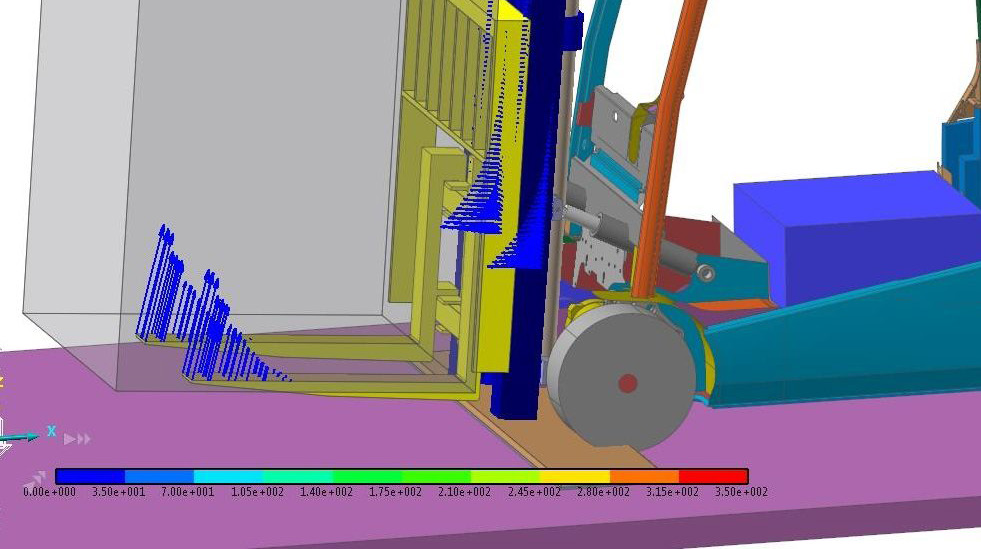
Flexible Multibody Dynamics at Toyota Material Handling
In the development process of a vehicle, it’s necessary to consider different types of load, both static and dynamic.
- Automotive
- Multibody Dynamics
- Recurdyn
- Case Study

Designing sacrificial element for energy absorption purposes in Hitachi trains
This component was made of a special composite material which combines the qualities of lightness, efficiency and low cost. Simulation was used to speed up the design phase and to better understand the product performance.
- Transportation
- CAE
- LS-Dyna
- Case Study
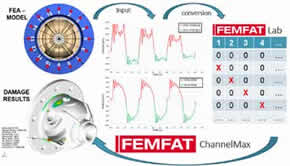
Improved Fatigue Prediction for Rotating Components
This new and more precise method for damage analysis of rotating components represents a considerable improvement over the standard methods currently in use.
- Industrial Equipment
- Fatigue Prediction
- FEMFAT
- Case Study

Multibody Dynamics Case Study of Chair Lift
RecurDyn Dynamic studies are required to predict the accelerations, verify that the cams are properly shaped, and to extract the loads to structurally size the parts. The multi-body model is all but trivial because it requires the combination of highly flexible bodies and the massive use of contacts.
- Equipment
- Multibody Dynamics
- RecurDyn
- Case Study
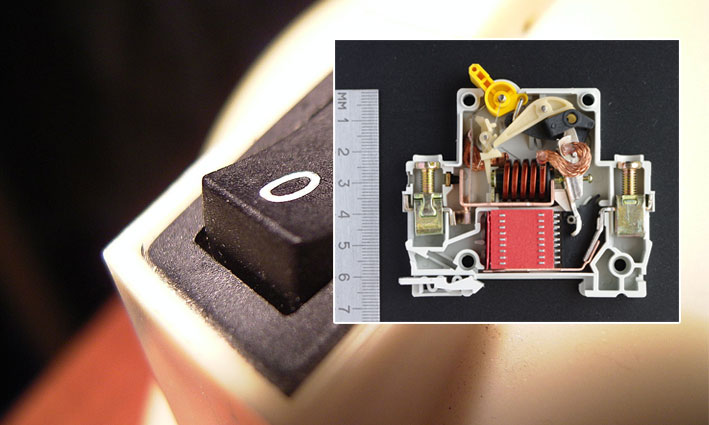
RecurDyn MBD Circuit Breaker Case Study
RecurDyn was used to simulate a Double Pole Single Throw Switch using three different modeling schemes
- Electical
- Multibody Dynamics
- RecurDyn
- Case Study

RecurDyn MBD Engine Dynamics Study
Efficient contact technology allowed realistic simulation of the kinematic joints with clearance between the coupled parts. A detailed representation of the experimental engine loads completed the engine model
- Automotive
- Multibody Dynamics
- RecurDyn
- Case Study
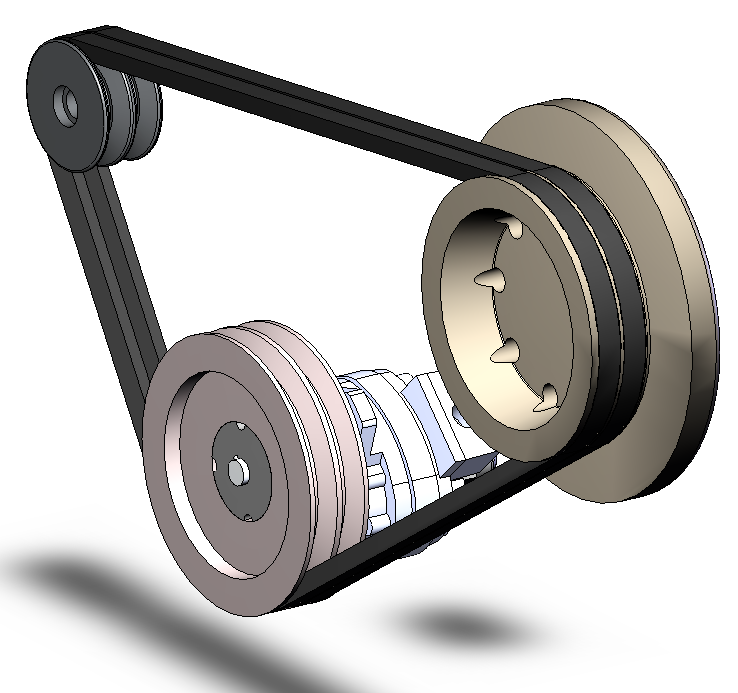
RecurDyn MBD Flexible Belts Case Study
Facilitates extraction of stresses and strains from entire structure and takes into account all friction forces, shape and misalignment dynamics and structural flexibility
- Automotive
- Multibody Dynamics
- RecurDyn
- Case Study
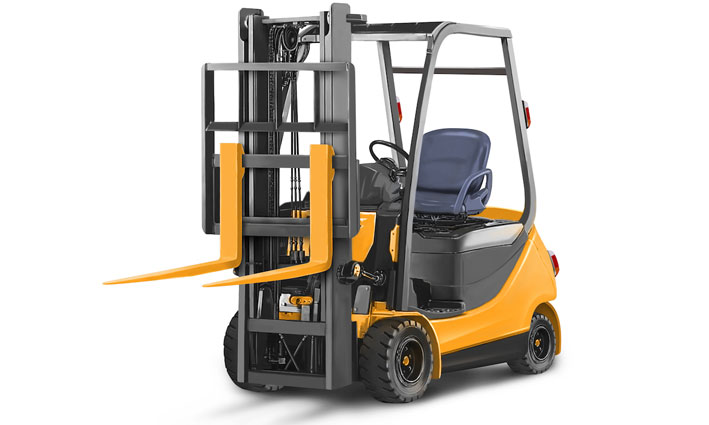
RecurDyn MBD Forklift Dynamics Case Study
Various load cases and driving maneuvers can be set up in order to assess the forklift’s static and dynamic stability; in addition, the loads that each part of the forklift can be measured and used as input for structural and fatigue-life verification.
- Heavy Industry
- Multibody Dynamics
- RecurDyn
- Case Study

